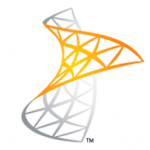Update Rollup 2 (UR2) for Exchange Server 2007 SP3 Released
Microsoft has released the following update rollup for Exchange Server 2010:
- Update Rollup 2 for Exchange Server 2007 SP3 (2407025)
If you’re running Exchange Server 2007 SP3, you need to apply Update Rollup 2 for Exchange 2007 to address the issues listed below.
Remember, you only need to download the latest update for the version of Exchange that you’re running.
Here is a list of the fixes included in update rollup 2:
- 972186 Need to include the server service as a required service for Exchange 2007 running on Server 2008
- 2290105Â OWA SharePointe/UNC Access is broken after SP3
Download the rollup here.
Microsoft also announced that UR3Â for Exchange 2007 SP3 should be released in February.
Installation Notes:
If you haven’t installed Exchange Server yet, you can use the info at Quicker Exchange installs complete with service packs and rollups to save you some time.
Microsoft Update can’t detect rollups for Exchange 2010 servers that are members of a Database Availability Group (DAG). See the post Installing Exchange 2010 Rollups on DAG Servers for info, and a script, for installing update rollups.
Update Rollups should be applied to Internet facing Client Access Servers before being installed on non-Internet facing Client Access Servers.
If you’re installing the update rollup on Exchange servers that don’t have Internet access, see “Installing Exchange 2007 & 2010 rollups on servers that don’t have Internet access†for some additional steps.
Also, the installer and Add/Remove Programs text is only in English – even when being installed on non-English systems.
Note to Forefront users:
If you don’t disable Forefront before installing a rollup or service pack, and enable afterwards, you run the risk of Exchange related services not starting. You can disable Forefront by going to a command prompt and navigating to the Forefront directory and running FSCUtility /disable. To enable Forefront after installation of a UR or SP, run FSCUtility /enable.






Follow Me